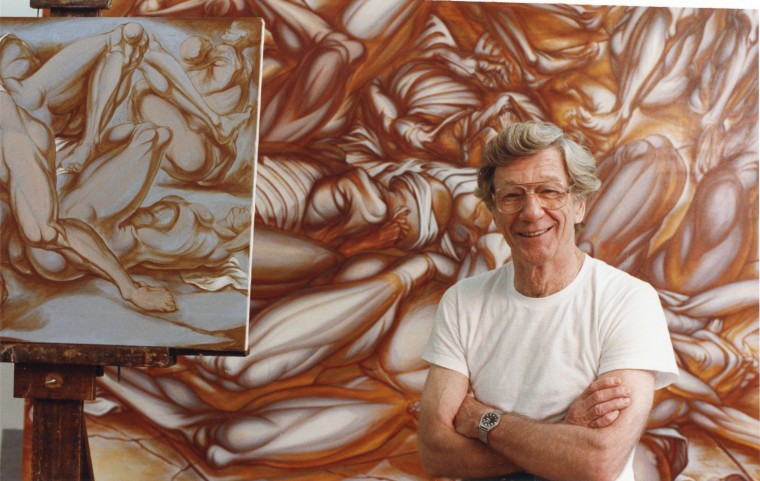Barry R. Schactman, professor emeritus of drawing and painting in the Sam Fox School of Design & Visual Arts at Washington University in St. Louis, died at his home Friday, July 3, 2015, surrounded by family and friends, after a long bout with Alzheimer’s disease. He was 85.
Schactman taught figure structure at the university for 30 years, introducing a generation of artists to the skills and techniques of classical draftsmanship. His own work was deeply informed by those traditions, but also by the expressive power of 20th-century figurative artists such as Rico Lebrun and Leonard Baskin.
“The human figure is central to my concerns in both drawing and painting. My work has been devoted to an investigation of the structural possibilities of the figure, aspiring to discover a sculptural vocabulary of forms freed from the confinements of traditional answers…”
~ Barry Schactman
“I invite you to see,” Schactman was fond of telling students. But for Schactman, this was not an invitation to passively look or gaze; nor to flatly reproduce, camera-like, that which happens to fall before the eye. Rather, it was an invitation to stand, to squat, to circle and move. It was an invitation to gather information, to study a thing from all sides, and to collate that knowledge on paper so that a viewer might comprehend it as well.
Born in Newark, N.J., in 1930, Schactman served two years in the U.S. Army before enrolling, on a boxing scholarship, at the University of Florida in Miami. After the death of his father, he returned home to support his mother and sister but took evening classes at the Art Students League in New York City. He later continued his studies at the Tyler School of Art in Philadelphia and at Yale University, where he studied color with Josef Albers and befriended Lebrun, who would become an important mentor. He then taught for a time at the University of Texas at Austin.
At Washington University, where he joined the faculty in 1962, Schactman often assigned students to study and reproduce old master drawings — and thus to grapple both with their powerful anatomical understanding and with the methods by which that understanding was translated into two dimensions. For example, he delighted in pointing out how a favorite Jacopo Pontormo drawing included information that could not actually be seen from a single viewpoint. When Schactman retired, in 1992, the university marked the occasion with a retrospective exhibition in Steinberg Hall.
Schactman is survived by his daughter, Amy Schactman; his sister, Rhoda Bartels; his granddaughter, Lilly O’Donnell; and his wife, Ana Grace Schactman. He was preceded in death by his first wife, Phyllis, in 1985, and by their son, Joseph, in 2000.
A short service was held July 7 at Gerber Chapel in Webster Groves, followed by burial at Jefferson Barracks National Cemetery. A memorial will be planned at a later date. In lieu of flowers, the family requests that donations be made to the Alzheimer’s Association or to Doctors Without Borders.
